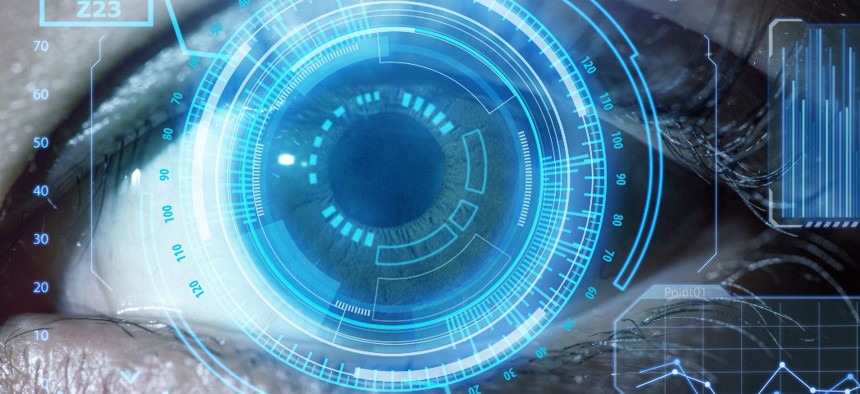Air Force Moves to Drive Computer Vision Research and Development

Yuichiro Chino/Getty Images
An official said it shows that DOD is serious about enabling more personnel to harness artificial intelligence.
The Air Force Research Laboratory is deepening its exploration of commercial computer vision, or technology that is essentially training digital systems to “see” the real world.
Through a new five-year Cooperative Research and Development Agreement or CRADA, announced on Wednesday, AFRL’s Space Vehicles Directorate will strategically access CrowdAI’s deep-learning capabilities.
Together, the entities intend to advance the nation’s hybrid space intelligence, surveillance and reconnaissance or ISR architecture—and artificial intelligence that enables computers to interpret the visual world.
“As part of this CRADA, AFRL will have broad access to CrowdAI's no-code computer vision platform to rapidly experiment with creating new computer vision models for various types of imagery and video, all within a secure government cloud environment,” CrowdAI’s Head of Operations Cliff Massey told Nextgov. “For example, if an imagery analyst wants to try to build her own model to detect and classify illegal fishing activity in the Pacific using satellite imagery, she'll be able to do so without needing to know the technical aspects of how to train an AI model.”
As mentioned, the company’s software platform can be used by those without data science or coding experience to build computer vision models to analyze imagery and video. Previously created models have been used not only for ISR applications, but also for humanitarian assistance and disaster response, countering illicit trafficking, public health monitoring, medical diagnostics and more.
The Defense Department has for a while now been working to design channels for exploiting data with AI tools—particularly in the “Hybrid Space Architecture,” which connects private, allied, tactical and national imagery collection systems for decision-making insights.
“In the conflict of the future, air and space superiority and access to any particular ISR asset are not assured,” AFRL Technical Program Manager Charlie Jacka wrote in the announcement. “So, being able to quickly pivot from sensor-to-sensor and to have computer vision capabilities pivot alongside them is how the Hybrid Space Architecture succeeds.”
CrowdAI’s connection to AFRL began in 2018 when the company won the lab’s pitch competition at the inaugural Hyperspace Challenge.
“It was at that event we were able to meet and connect with AFRL staff from across the organization, each of whom had unique and interesting problems that AI could potentially solve,” Massey explained.
Via this new agreement, the company will also support major military exercises, such as the Rim of the Pacific.
CrowdAI was the first commercial computer vision vendor to collaborate with the Pentagon’s Joint Artificial Intelligence Center from its launch, also in 2018. More recently, it was named among businesses selected by the JAIC to perform testing and evaluation of AI models in its ecosystem under a massive blanket purchase agreement.
“While the contracts themselves aren't related, I think they do show an increasing willingness within the [DOD] to invest in commercialized AI and specifically to acquire tools like CrowdAI that enable a broader group of people to create and use AI directly,” Massey said. “Since our platform is code free, for example, intelligence analysts can create models fine-tuned to their specific workflows, rather than having to rely on direct acquisition of those models from the market.”






